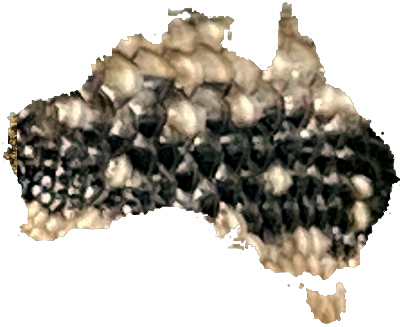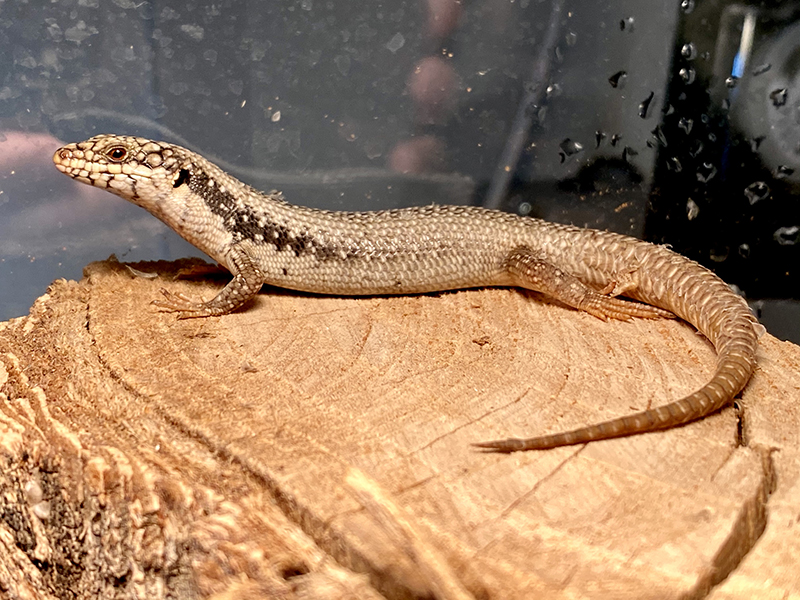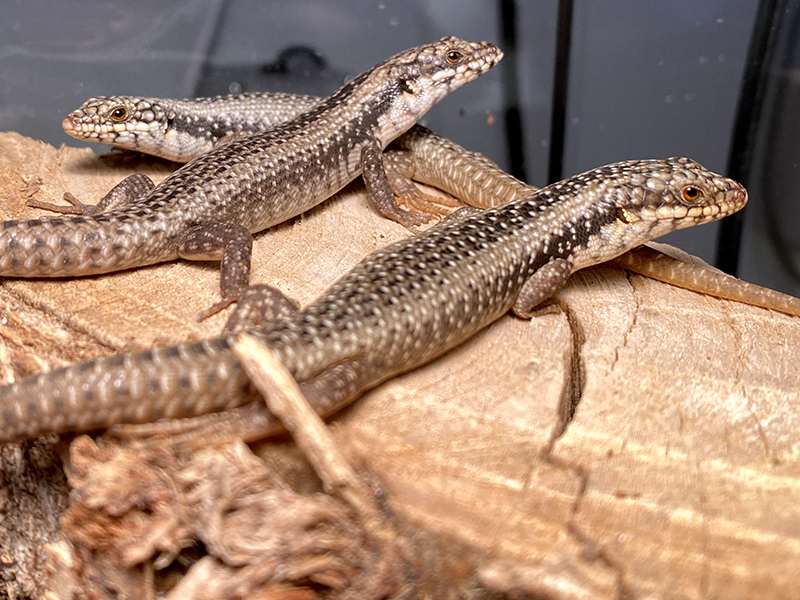







 |
||||||
 |
 |
 |
 |
 |
 |
 |

| About: The
Australian tree skink (Egernia
striolata) is a medium sized
skink that is adapted to life in the
trees. They have a base color of
silvery grey with a pattern of
darker markings forming bold lateral
stripes from behind the eyes and
becoming diffuse midbody. There is
also a pattern of dark checkerboard
scales down the dorsal surface. The
reticulated face markings with white
labial and throat scales complete
the attractive pattern. Range: Egernia striolata has a large range through the southeastern corner of Australia. This species ranges from the lower parts of NSW all the way up to the base of the Cape York peninsula. They extend as far west as the Gawler Ranges in South Australia Habitat: As it's name implies, this skink is generally found in association with trees. They are found in woodland throughout their range, but may also use rock outcrops depending on local availability. They will utilize hollow logs and tree stumps as places of retreat. Natural History Notes: Like many members of the Egernia genus, these skinks are found in social groups, including adults and juveniles. They take around 2-3 years to mature in the wild and juveniles may be chased off once they reach maturity. They can live up to 10 years. Several similar species make up the striolata complex, including douglasi, formosa, mcpheei, napoleonis, pilbarensis, and saxatilis which are generally similar in build and pattern and range across Australia. The species may differ in their habitat preferences. Like other members of this genus, the Australian tree skink is vivparous or live-bearing. They can have 2-6 offspring and generally give birth in mid summer and may have a prolonged parturition lasting up to a week (Chapple, 2003). Larger females will typically have larger litters. General Notes: In the wild, primary food items include beetles, ants, grasshoppers and cockroaches. These lizards do well on a diet of dubia roach nymphs, crickets, or other appropriately sized insects. In the wild they are known to take as much as 40% plant matter in the diet (Chapple, 2003) and are considered omnivores in their feeding habits. They will also do well on commercial diets like Repashy's Bluey Buffet or even various flavors of baby food. They are a bolder species of Egernia and are very inquisitive and fun to watch. |
 
A beautiful Australian
tree skink (Egernia
striolata)

A group of juvenile Australian
tree
skinks (Egernia
striolata)
|